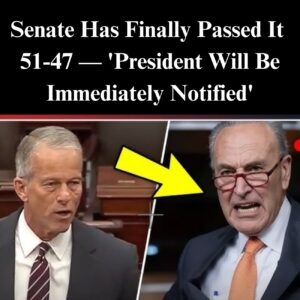The Trump administration has begun a sweeping shake-up within the federal immigration court system, quietly dismissing dozens of judges as part of a larger effort to overhaul what officials describe as a “dysfunctional and overly politicized” system.
According to a report from El País, around 50 immigration judges have been removed from their positions since the beginning of August, while another 50 have reportedly been transferred or encouraged to retire. The move follows a White House directive to streamline immigration proceedings and reduce the record 3 million-case backlog that has built up over recent years.
The dismissals were delivered through short, formal notices—typically brief emails informing judges that their service was no longer required. No public announcement was made, but the message was clear: the administration is determined to reshape the immigration judiciary.
A System Under Scrutiny
President Donald Trump has long criticized what he calls “activist judges” who he believes have hindered immigration enforcement through lenient rulings. The latest actions appear to be a direct response to those frustrations, signaling a new phase of the administration’s broader effort to restore control and consistency to the system.
Some of the dismissed judges have gone public, claiming they were targeted for their prior rulings or political leanings. Among them is Jennifer Peyton, appointed during the Obama administration in 2016. She said she received her dismissal notice while on vacation, with no prior warning or disciplinary record.
“I was shocked,” Peyton said, alleging that her removal may have been politically motivated. She suggested that conservative groups had pressured the administration to remove her after she gave a courthouse tour to Democratic Senator Dick Durbin.
Sen. Durbin, who chairs the Senate Judiciary Committee, called Peyton’s removal an “abuse of power,” accusing the administration of attempting to intimidate the judiciary.
However, supporters of the shake-up argue the opposite—saying the move represents an overdue accountability effort within a system that has long operated without sufficient oversight.
Union Pushback and Claims of Discrimination
The National Association of Immigration Judges (NAIJ), which represents immigration judges nationwide, confirmed that roughly 50 judges have been dismissed so far. Its president, Matt Biggs, said the remaining judges are “deeply concerned” about the direction the administration is taking.
“Morale is low, and there’s a sense of fear,” Biggs told reporters. “Judges are uncertain whether their decisions will be second-guessed by political officials.”
Some judges have also claimed that the dismissals were discriminatory. Carla Espinoza, who served as a short-term immigration judge in Chicago, said her contract was not renewed because of her gender and Hispanic background.
Espinoza’s case, however, has drawn scrutiny. She reportedly dismissed charges against a Mexican national who had been flagged by Homeland Security after being falsely accused of threatening the president. Espinoza later described her ruling as “fair and justified,” but critics within DHS say it exemplified the kind of decision-making that has frustrated federal authorities.
Restructuring and the Bigger Picture
Administration officials maintain that the dismissals are not politically motivated, but rather part of a broad restructuring of the immigration courts.
“This isn’t about punishing anyone—it’s about performance, efficiency, and restoring faith in the system,” a senior DHS official said on background. “For too long, certain judges have ignored enforcement priorities and created unnecessary backlogs. That’s changing.”
The Executive Office for Immigration Review (EOIR), which oversees the nation’s immigration courts, has been directed to conduct a full review of judicial caseloads, case outcomes, and performance metrics. Officials say the goal is to identify bottlenecks and improve consistency across regions.
At the same time, the White House has reportedly begun recruiting new judges with backgrounds in law enforcement, national security, and immigration prosecution—part of an effort to align judicial leadership with the administration’s enforcement agenda.
Critics Call It Political Retaliation
Legal analysts and civil rights groups have sharply criticized the move, describing it as an unprecedented attempt to politicize the judiciary.
“This is a dangerous precedent,” said Julia Hernandez, a senior attorney with the American Immigration Council. “Firing judges because their rulings don’t align with political goals undermines judicial independence and erodes the rule of law.”
Democratic lawmakers have echoed that concern, accusing the administration of using dismissals to send a message to remaining judges.
Still, administration allies insist the actions are necessary. “This isn’t a purge—it’s reform,” said one senior aide to the president. “The American people are tired of seeing immigration laws ignored. The system is finally being held accountable.”
A Long Road Ahead
With more than three million pending cases still clogging the system, the immigration courts face a monumental challenge. While the recent dismissals may speed up some proceedings, experts warn that the short-term disruption could create confusion and delays as new judges are appointed and reassigned.
For now, the administration appears undeterred. President Trump has made immigration enforcement a central pillar of his second term, framing the issue as a matter of national security and sovereignty.
“The days of activist judges standing in the way of border enforcement are over,” one White House official said. “We’re restoring fairness, consistency, and respect for the law.”
Whether the shake-up succeeds in achieving that goal—or sparks further controversy—remains to be seen. But one thing is clear: the immigration courts, long viewed as insulated from political upheaval, are now at the center of one of Washington’s most consequential power struggles.





